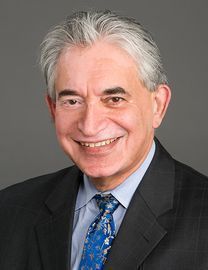Publication
Article
Urology Times Journal
Call it by any name: Bladder that does not work
Author(s):
Gopal H. Badlani, MD

As we look back over the past 5 decades in urology, bladder dysfunction, particularly inadequate contraction, is still a disorder with unmet medical need, for which new treatments are crucial.
“Underactive bladder” (UAB) is a term covering detrusor underactivity as the urodynamic diagnosis, and “UAB syndrome” for its symptomatic manifestations. The acontractile bladder is a urodynamic-based diagnosis wherein the bladder is unable to demonstrate any contraction during a pressure flow study. Although it is often grouped with UAB, acontractile bladder is a unique phenomenon and should be investigated independently.1 The underlying pathology is variable with both neurological and myogenic etiologies. The disorder can have many underlying causes, including aging, prolonged bladder outflow obstruction, diabetes mellitus, and neurogenic disturbances. The term defined by the International Continence Society in 2002 was the urodynamic term, detrusor underactivity (DU) along with detrusor acontractility. The International Continence Society definition provides a framework, considering the urodynamic abnormality of contraction and how this affects voiding;2 however, this is necessarily limited clinically. Detrusor underactivity is present in 9% to 48% of men and 12% to 45% of older women undergoing urodynamic evaluation for non-neurogenic lower urinary tract symptoms.
The condition itself is confusing enough, but over the years, we have seen many different terminologies to describe the syndrome. Furthermore, the coexistent overactive bladder (OAB)-UAB (with or without detrusor overactivity and underactivity)3 is the latest attempt to rename detrusor overactivity with impaired contractility described by Yalla et al.4
Although the inability to empty and having a high postvoid residual are easier to understand as a complaint, it is when the UAB presents with frequency urgency (OAB) symptoms that leads to confusion in the diagnosis. The response to OAB drugs is poor and the residual urine increases. A urodynamic study may help in diagnosis but brings one no closer to a solution.
The International Congress of Urologic Research and Education on Aging Underactive Bladder (CURE-UAB) is an initiative partially funded by the National Institute of Diabetes and Digestive and Kidney Diseases,5 and since 2014, 5 CURE-UAB congresses have taken place. “They have brought together diverse stakeholders in the UAB field to identify areas of major scientific challenge and initiated a call to action among the medical community,” write Chancellor et al.
Although several advances have been made to manage urinary bladder overactivity, UAB remains poorly addressed. Treatment is largely tailored for renal preservation and reduction of infection. Future developments may allow for functional restorative treatments; current treatments mainly focus on bladder drainage, largely based on symptoms and presentation. Cellular therapy and neuromodulation may hold promise, but further research is needed into the underlying neuro-urological pathophysiology of this disease so that we can better develop future treatments.
So what is the take-home message? Consider the diagnosis of UAB or detrusor underactivity when an elderly patient, with or without diabetes, presents with frequency, urgency, and a higher-than-normal postvoid residual. If the patient is an older man, do not be too quick to treat his prostate, and if a woman, hesitate before prescribing a medication for OAB.
Bladder training is the best initial management. Need for drainage with clean intermittent catheterization is based on postvoid residual. A multichannel urodynamic study helps clarify the diagnosis. Based on patient choice, neuromodulation may help with OAB symptoms without adding to the postvoid residual, whereas onabotulinumtoxinA (Botox) use requires clean intermittent catheterization. Counseling and setting up expectations are key in managing these patients; that is, until that magic cure arrives.
Gopal H. Badlani, MD, is professor and vice chair of Urology at Wake Forest University in Winston-Salem, North Carolina, and is a co–editor in chief for Urology Times.
References
1. Colaco M, Osman NI, Karakeçi A, et al. Current concepts of the acontractile bladder. BJU Int. 2018;122(2):195-202. doi:10.1111/bju.14236
2. Osman NI, Chapple CR, Abrams P. Detrusor underactivity and the underactive bladder: a new clinical entity? A review of current terminology, definitions, epidemiology, aetiology, and diagnosis. Eur Urol. 2014;65(2):389-398. doi:10.1016/j.eururo.2013.10.015
3. Mancini V, Tarcan T, Serati M, Wyndaele M, Carrieri G, Abrams P. Is coexistent overactive-underactive bladder (with or without detrusor overactivity and underactivity) a real clinical syndrome? ICI-RS 2019. Neurourol Urodyn. 2020;39(suppl 3):S50-S59. doi:10.1002/nau.24311
4. Resnick NM, Yalla SV. Detrusor hyperactivity with impaired contractile function. An unrecognized but common cause of incontinence in elderly patients. JAMA. 1987;257(22):3076-3081. doi:10.1001/jama.257.22.3076
5. Chancellor MB, Bartolone SN, Lamb LE, Ward E, Zwaans BMM, Diokno A. Underactive bladder; review of progress and impact from the international CURE-UAB initiative. Int Neurourol J. 2020; 24(1):3-11. doi:10.5213/inj.2040010.005


























